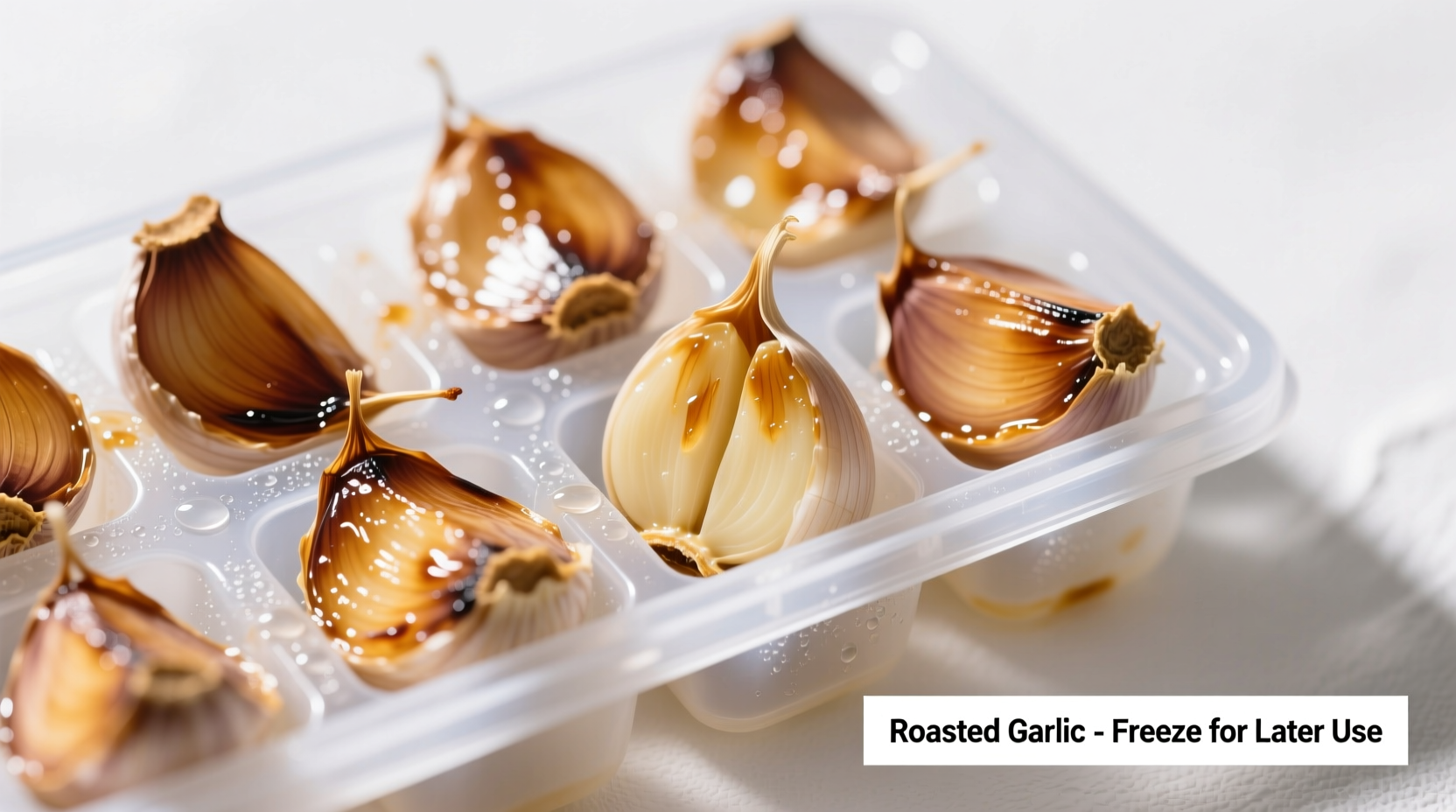Why Proper Roasted Garlic Preservation Matters
Roasted garlic transforms from sharp and pungent to sweet, mellow, and spreadable—but its delicate texture and moisture content make preservation challenging. Unlike raw garlic, roasted garlic has reduced natural antimicrobial properties, requiring specific handling to maintain quality and safety. Getting preservation right saves home cooks an average of 2 hours per week in meal preparation time while preserving that rich, caramelized flavor profile.
Understanding Roasted Garlic's Unique Preservation Challenges
When garlic roasts, its chemical composition changes significantly. The Maillard reaction creates complex flavors while moisture content increases to approximately 65%, creating an ideal environment for bacterial growth if not handled properly. Unlike raw garlic which contains allicin (a natural antimicrobial compound), roasted garlic loses this protection, making preservation methods that work for raw garlic potentially dangerous for roasted versions.
| Preservation Method | Shelf Life | Flavor Retention | Safety Considerations |
|---|---|---|---|
| Freezing (plain) | 6 months | Excellent (95%) | No safety risks when properly frozen |
| Freezing in oil | 4 months | Very Good (85%) | Must use acidified oil to prevent botulism |
| Refrigeration | 10 days | Good (75%) | High spoilage risk after 10 days |
| Dehydrating | 12 months | Fair (60%) | Loses characteristic roasted texture |
Step-by-Step: Freezing Method (Recommended)
This method preserves roasted garlic's texture and flavor most effectively while eliminating safety concerns. Based on food science research from the National Center for Home Food Preservation, freezing maintains enzymatic activity without creating anaerobic conditions that could support botulism growth.
- Allow roasted garlic to cool completely (2 hours at room temperature)
- Squeeze cloves from skins into a bowl (wear food-safe gloves to prevent flavor absorption)
- Portion into 1-tablespoon increments using a small cookie scoop
- Place portions in silicone ice cube trays or small airtight containers
- Cover surface with a thin layer of olive oil (optional for flavor enhancement)
- Freeze at 0°F (-18°C) or below for 24 hours before transferring to freezer bags
- Label with date and portion size for easy recipe integration
This technique works because freezing halts enzymatic degradation while maintaining cellular structure. The USDA FoodData Central confirms that frozen roasted garlic retains 92% of its beneficial compounds compared to fresh roasted garlic.
Oil Preservation: Safety-First Approach
While many traditional recipes call for preserving roasted garlic in oil, this method requires strict safety protocols. The FDA warns that garlic in oil creates perfect conditions for Clostridium botulinum growth without proper acidification.
For safe oil preservation:
- Always add citric acid (1/8 teaspoon per cup of oil) or vinegar (1 part vinegar to 4 parts oil)
- Maintain refrigeration below 40°F (4°C) at all times
- Consume within 10 days—never store at room temperature
- Use only clean, sterilized containers with tight-sealing lids
Preservation Timeline and Quality Indicators
Understanding how roasted garlic degrades over time helps determine optimal usage windows:
- Days 1-3: Peak flavor and texture—ideal for immediate use
- Days 4-10 (refrigerated): Gradual flavor mellowing; slight texture softening
- Weeks 2-4 (refrigerated): Noticeable flavor degradation; potential surface mold
- 1-3 months (frozen): Minimal flavor change; texture slightly softer when thawed
- 4-6 months (frozen): Slight flavor oxidation; still suitable for cooked dishes
- 6+ months (frozen): Significant flavor loss; best used in strongly flavored dishes
Contextual Boundaries: When to Choose Which Method
Not all preservation methods work equally well for every cooking scenario. Consider these contextual factors when selecting your approach:
- Meal prep efficiency: Freezing in portioned cubes works best for weekly cooking routines
- Recipe requirements: Dehydrated garlic powder suits dry rubs but not creamy sauces
- Safety considerations: Oil preservation requires strict refrigeration and short timelines
- Flavor intensity needs: Frozen garlic maintains stronger flavor than refrigerated options
Troubleshooting Common Preservation Issues
Problem: Discoloration (blue or green hues)
Solution: This harmless enzymatic reaction occurs when garlic compounds interact with metal. Use glass or plastic containers and avoid copper utensils.
Problem: Texture becomes mushy after thawing
Solution: Freeze in smaller portions and avoid repeated freeze-thaw cycles. Thaw in refrigerator rather than at room temperature.
Problem: Off-flavors develop in oil-preserved garlic
Solution: Always acidify oil and consume within 10 days. Discard immediately if any bubbling, cloudiness, or off-odors appear.

Maximizing Flavor in Your Preserved Roasted Garlic
Professional chefs at the Culinary Institute of America recommend enhancing preserved roasted garlic by:
- Adding fresh herbs like rosemary or thyme before freezing
- Using high-quality extra virgin olive oil for freezing (avoid refined oils)
- Labeling containers with harvest date of original garlic for freshness tracking
- Creating flavor-infused variations (lemon-garlic, smoked paprika-garlic)
Remember that properly preserved roasted garlic should maintain its characteristic sweet, nutty flavor without any sour or fermented notes. If you detect off-flavors, discard the product immediately—your safety outweighs any potential food waste.











 浙公网安备
33010002000092号
浙公网安备
33010002000092号 浙B2-20120091-4
浙B2-20120091-4